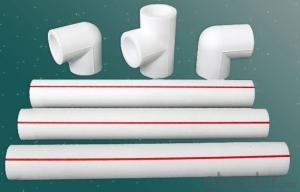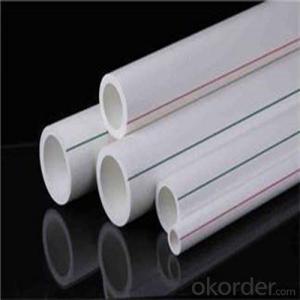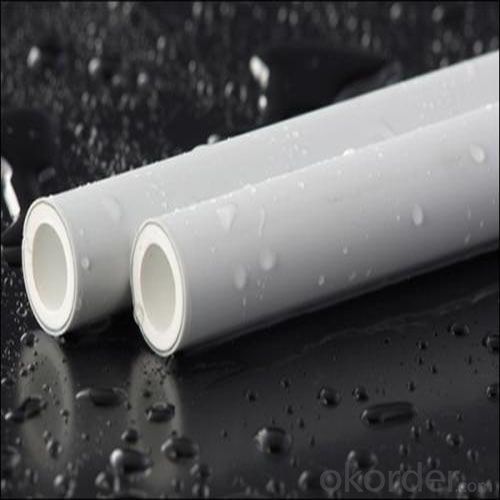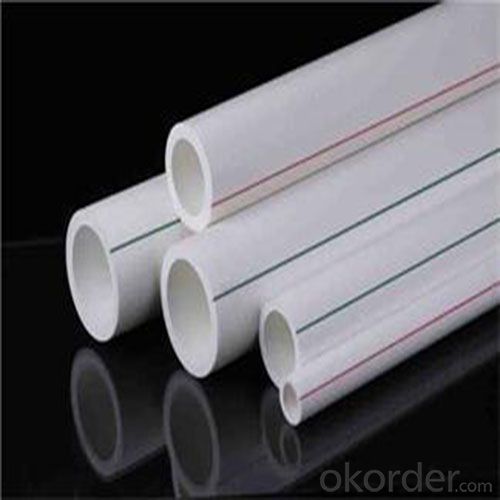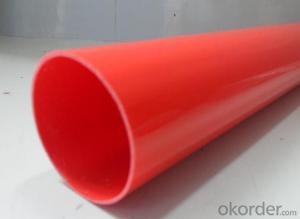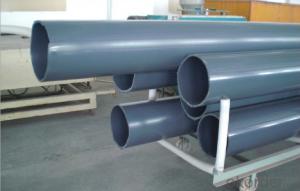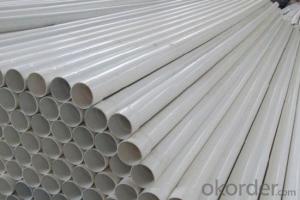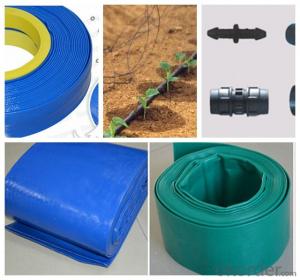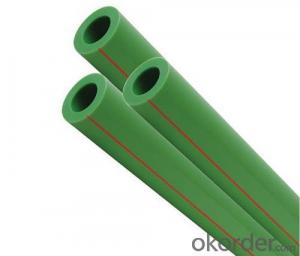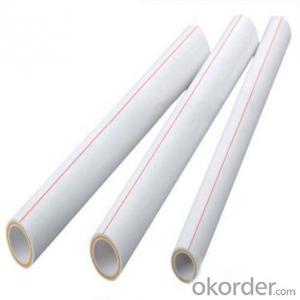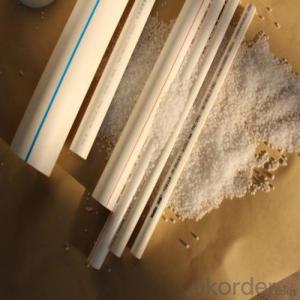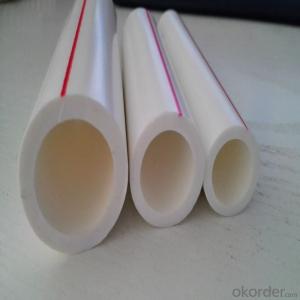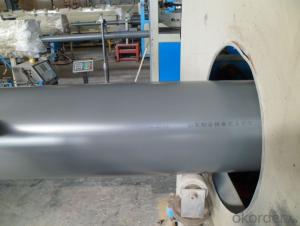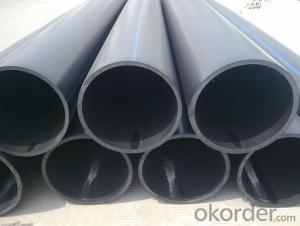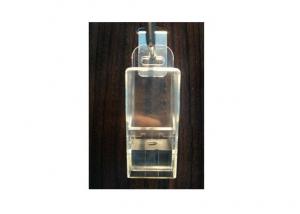Plastic Tubes PPR Pipe for Landscape Irrigation Drainage Application
- Loading Port:
- Tianjin
- Payment Terms:
- TT OR LC
- Min Order Qty:
- 1000 pc
- Supply Capability:
- 100000 pc/month
OKorder Service Pledge
OKorder Financial Service
You Might Also Like
Product Overview
Place of Origin: Henan, China (Mainland)
Model Number: PE100
Material: PPR
Specification: DN 20-mm~DN1200mm
Length: According to customer requirement
Thickness:SDR11/13.6/17
Standard: ISO
Color: White, Gray, Green, or as you required.
Product name: PPR Pipe
Application: house and garden
Usage: Family Decoration Industry
Certification: ISO Certificate
Feature: Lightweight
Size: 20-110mm
Connection: Butt Fusion
Our Services
1. OEM Manufacturing welcome: Product, Package...
2. Sample order
3. We will reply you for your inquiry in 24 hours.
4. after sending, we will track the products for you once every two days, until you get the products. When you got the
goods, test them, and give me a feedback.If you have any questions about the problem, contact with us, we will offer
the solve way for you.
Product Description
1.Material : | PPR |
2.Color: | White, Gray, Green, or as you required. |
3.Size: | 20-110mm |
4.Logo: | CMAX or Customized |
5.MOQ | 500pcs |
6.Samples Time: | (1) 4-5days-If you want to customize your logo. |
(2) 1day-For our existing samples for reference. | |
7.OEM Accepted | Yes |
8.Certification available: | Yes |
9.Packing Details: | Weaving Bag |
10.Production Capacity: | 5,000,000pcs Per month. |
11.Payment Term: | (1) L/C,T/T,D/P |
Product Show

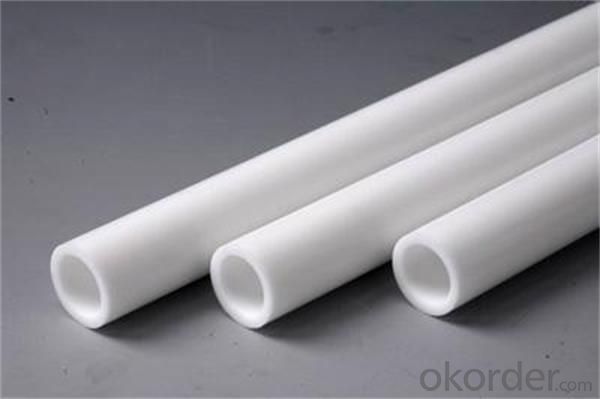
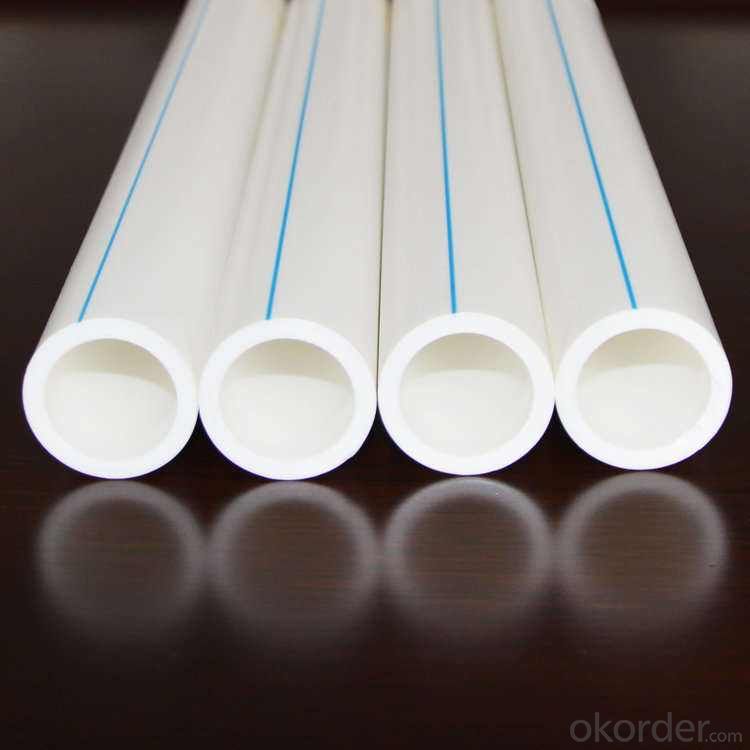
FAQ
Q1: How Can I Get A Sample?
A1: You can get samples by communicate with our export sales.
Q2: How Long Is Delivery?
A2: Delivery time will be30-45days according to order quantity.
Q3: What Is The MOQ?
A3: MOQ depends on different items.
Q4: What Is Our Normal Payments Terms?
A4: Our normal payment terms now is: T/T, L/C or western union, pay
- Q: what is dialysis tubing? how can it be used to demonstrate osmosis?
- Dialysis tubing is actually a semi-permeable membrane when used in water. Experiments illustrating osmosis and pressure gradients across a membrane use dialysis tubing. This tubing usually comes in rolls and when wet, will open up into a cylindrical tube that can be tied off at the ends. The tubing can also be fitted over a thistle tube for such experiments. Dialysis tubing is literally a semi-permeable sheet of plastic. [Like a cell membrane, it can allow certain things in, but not everything.] In a dialysis tubing experiment, one fills the inside of the sheet with a concentrated liquid of some sort and then seals off the open ends of the tube. Then, one places the tube and liquid into another type of liquid and after awhile, the liquid from the outside moves inside the tube. What I did for my first dialysis tubing experiment was filling the inside of the tube with a concentrated starch solution and placed the tubing into a beaker of Lugol's solution diluted with distilled water. After a 1/2 hr, some of the Lugol's and distilled water will have entered the dialysis tubing. One can see that osmosis has happened because the Lugol's in the tube would have turned blue when in contact with the starch. Osmosis caused the diluted/unconcentrated solution of Lugol's and dH2O to go through the semi permeable membrane and into the concentrated solution of starch. Like a cell's membrane, if the outside of the cell is more concentrated, the cell would lose water because the the water will leave the cell and go for the concentrated outside environment. If the inside of the cell was more concentrated than the outside, the outside water will go into the cell through the semipermeable membrane.
- Q: Do plastic tubes have any insulation properties?
- No, plastic tubes do not have insulation properties. They are generally used for conveyance purposes and do not provide any significant thermal insulation.
- Q: Seems to me they could be half the size they are and would still be perfectly usable.
- There are so many other problems in this world. Bigger ones. Plastic is plastic man. If the tube was half the size, that's half the stuff, so you'd buy twice as much. Same amount of plastic. More work in production. Pointless. *shrugs*
- Q: What material of buried pipeline needs to be treated with rust prevention? What kind of material needs to be treated with antiseptic, what kind of material is it made or not?
- But such as corrosive or too humid environment, such as galvanized steel pipe also need anti-corrosion; there are electrochemical corrosion conditions, such as beaches, concrete, not repair steel pipe also have anti-corrosion measures; and so on.
- Q: Do plastic tubes have any limitations in terms of static electricity buildup?
- Yes, plastic tubes can generate static electricity buildup due to their insulating properties. However, the extent of static electricity buildup in plastic tubes depends on factors such as the type of plastic used, environmental conditions, and the flow of material through the tube. To minimize static electricity buildup, grounding techniques or anti-static additives can be employed.
- Q: What are the disadvantages of using plastic tubes?
- One major disadvantage of using plastic tubes is their environmental impact. Plastic tubes are often made from non-biodegradable materials, contributing to the global plastic pollution crisis. Additionally, plastic tubes require significant amounts of energy to produce, increasing carbon emissions and contributing to climate change. Furthermore, plastic tubes can be prone to leaching harmful chemicals, such as BPA, which can pose health risks. Finally, plastic tubes are less durable than alternatives like metal or glass, making them more susceptible to wear and tear, leading to frequent replacements and increased waste generation.
- Q: How much should it cost to replace the Mass Airflow tube on a 2000 Mazda Protege? The tube is ripped, so it's messing with the MAF sensor. The mechanic quoted me $50 for the part (not including labor), and I just want to make sure they're not over-charging me. I mean, it is just a plastic tube...
- www.okorder / Click this:
- Q: Can plastic tubes be used for medical purposes?
- Yes, plastic tubes can be used for medical purposes. They are commonly used in clinical settings for various applications such as administering medications, draining fluids, and delivering nutrients. Plastic tubes used in medical procedures are often made from materials such as polyvinyl chloride (PVC) or silicone, which are designed to be safe and compatible with the human body.
- Q: Do plastic tubes have any limitations in terms of temperature resistance?
- Yes, plastic tubes have limitations in terms of temperature resistance. Different types of plastics have different temperature thresholds beyond which they may deform, melt, or become brittle. It is crucial to choose the appropriate plastic material for specific temperature ranges to ensure optimal performance and durability.
- Q: How do I connect the cast iron sewer line with the PVC pipe?
- Cast iron down pipe connection with PVC pipe:1, at the interface congestion, leakage, seal, (building materials stores have sold)2, with a PVC big head, variable diameter, iron pipe inserted inside the variable diameter;The water pipe is the water supply pipeline, the modern decoration water pipe is uses the burying wall type construction, the water pipe classification has three kinds, the first kind is the metal pipe, such as the hot cast iron pipe, the copper pipe, the stainless steel tube and so on inside the lining plastic. The second kind is the plastic compound metal pipe, such as plastic compound steel tube, aluminum plastic composite pipe, etc.. The third category is plastic pipes, such as PB and PP-R.
Send your message to us
Plastic Tubes PPR Pipe for Landscape Irrigation Drainage Application
- Loading Port:
- Tianjin
- Payment Terms:
- TT OR LC
- Min Order Qty:
- 1000 pc
- Supply Capability:
- 100000 pc/month
OKorder Service Pledge
OKorder Financial Service
Similar products
Hot products
Hot Searches
Related keywords
